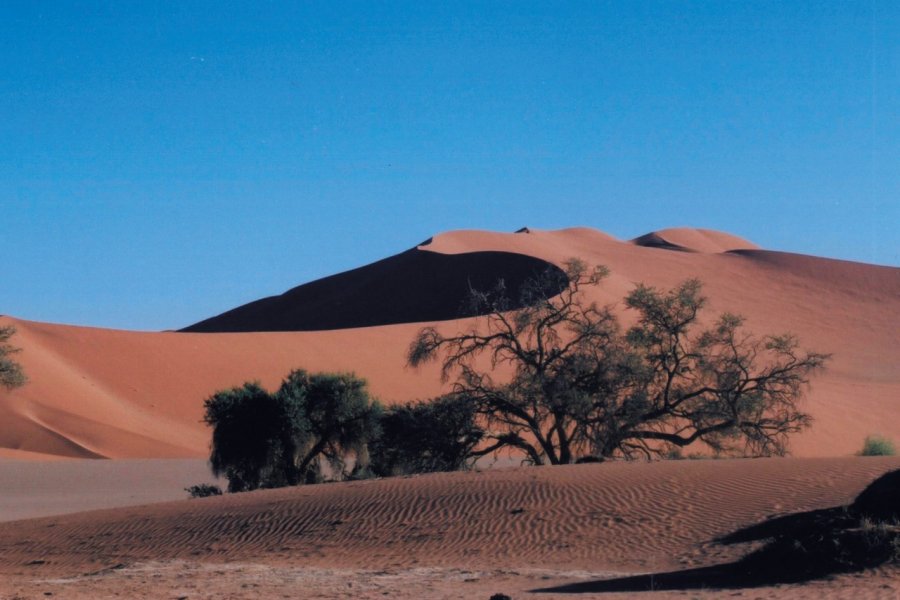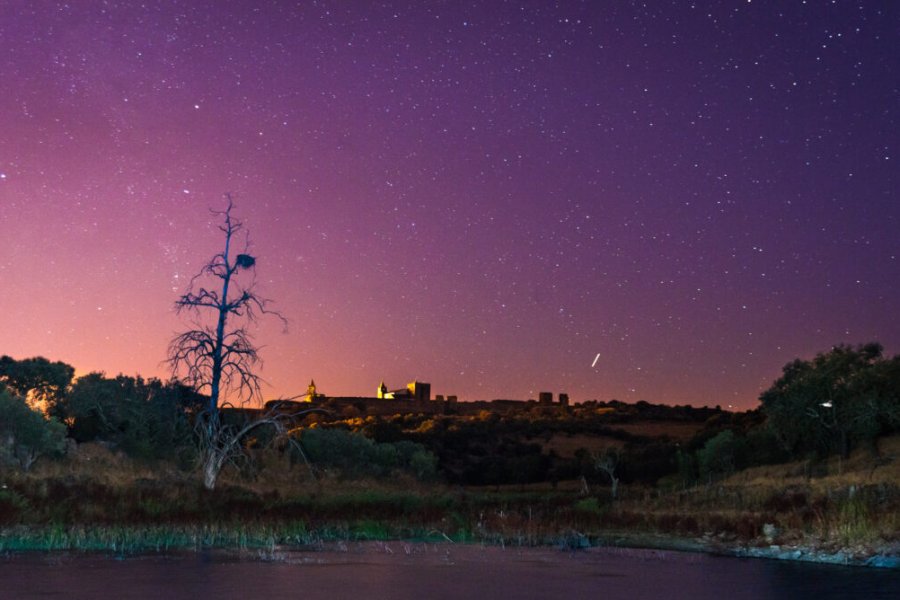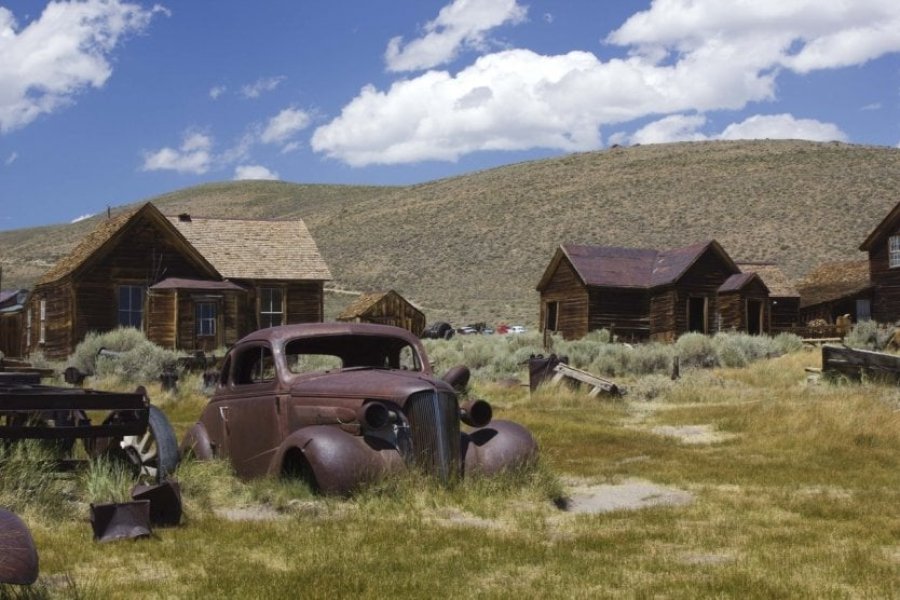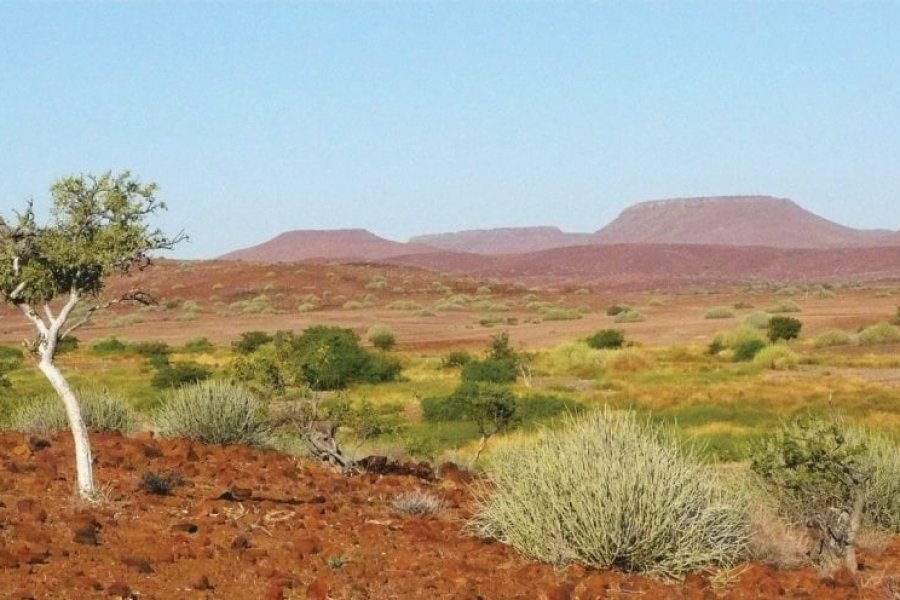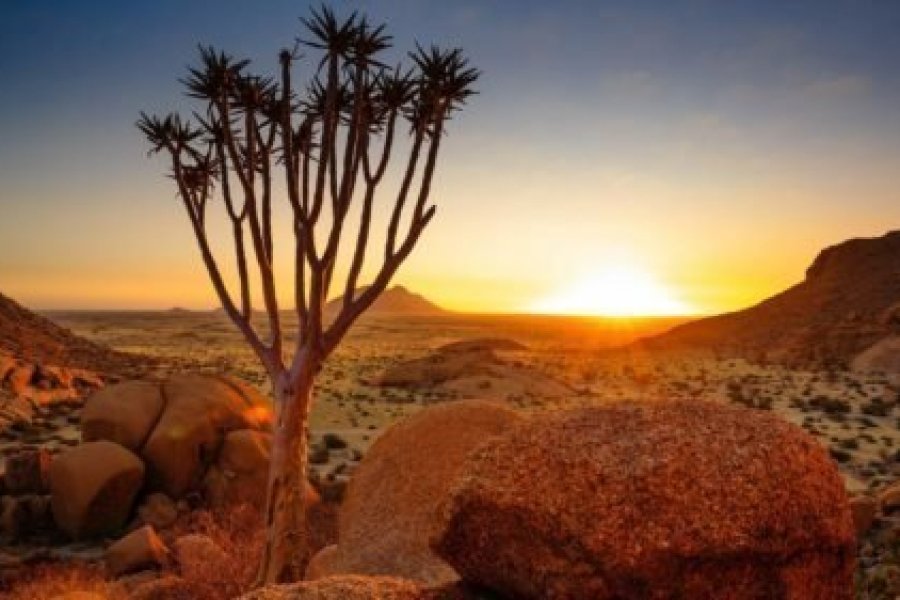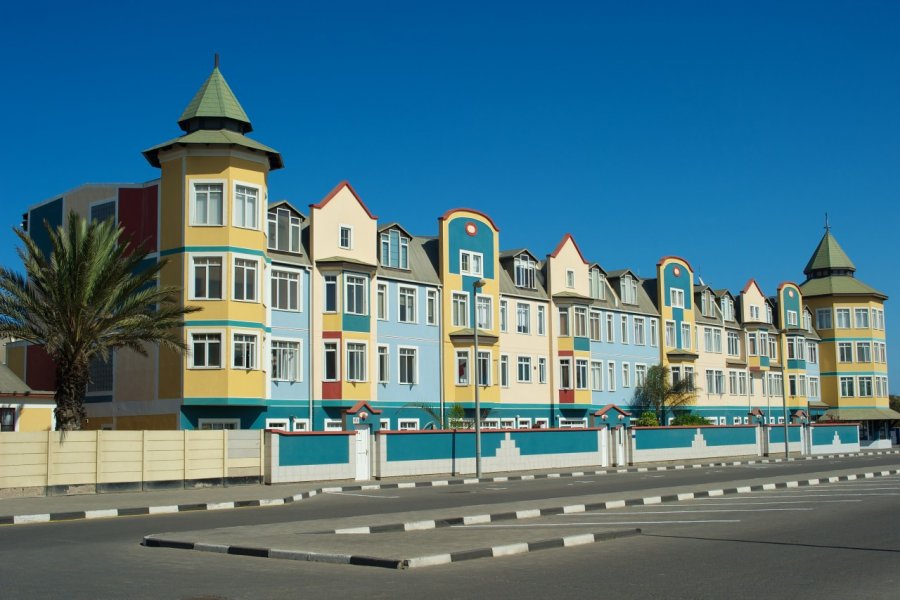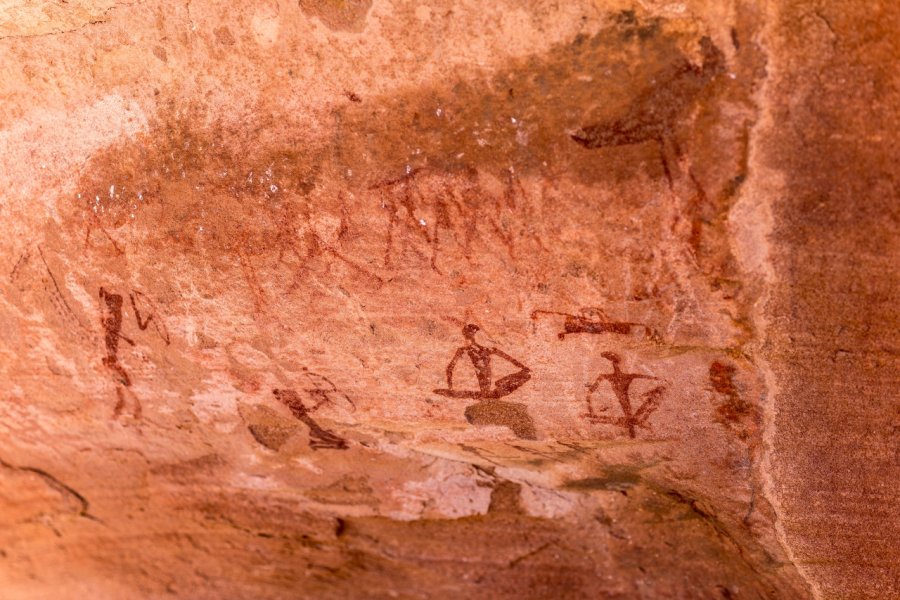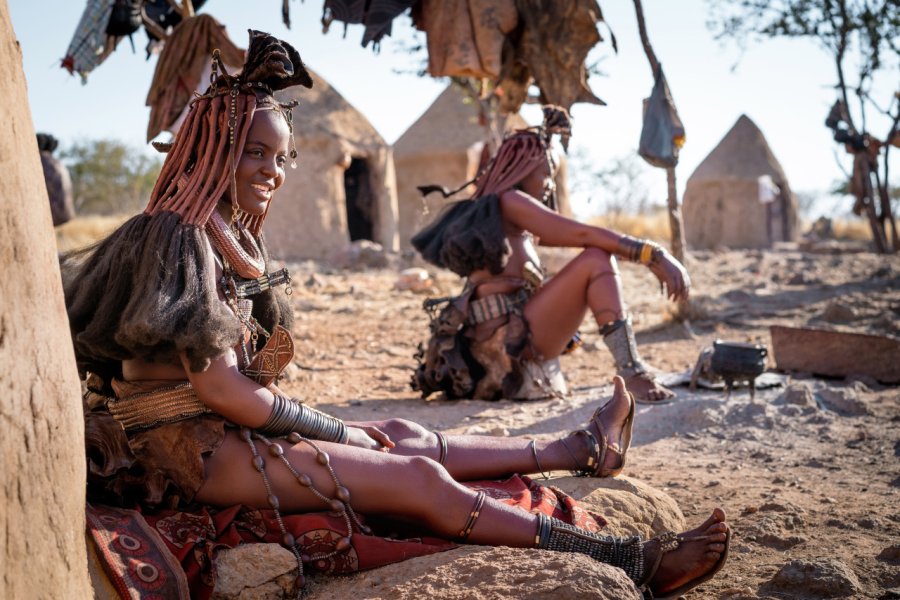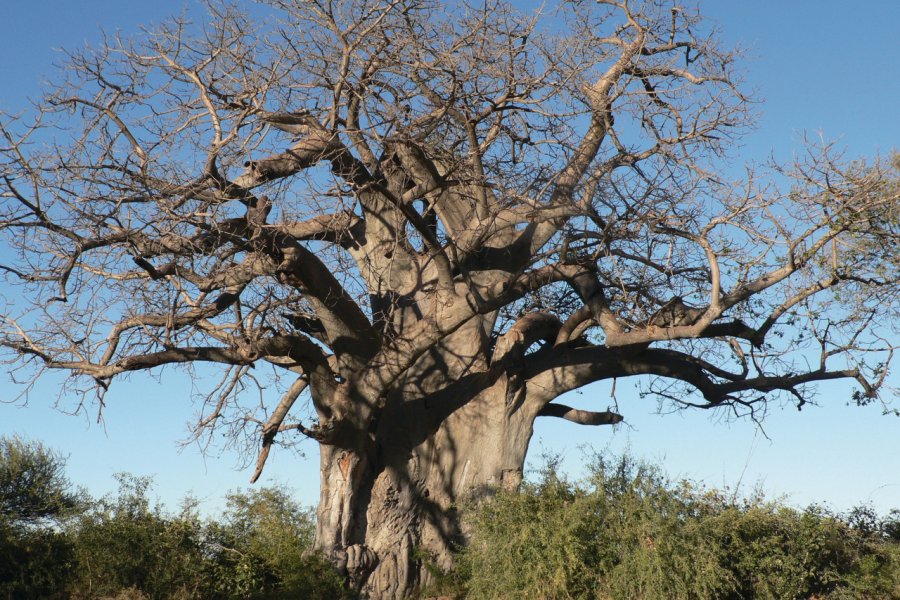Travel guide Namibia
From the famous and arid Kalahari Desert to the Victoria Falls at the northeastern tip, the Namib Desert and the Skeleton Coast National Park, Namibia's contrasting landscapes are extremely fascinating even for travelers who are already familiar with the great outdoors. The Etosha National Park, one of the largest in Africa, with its magnificent Etosha dunes is the ideal place to create your safari in Namibia; you can see many species including the famous Big five . But Namibia is also about luxurious lodges and breathtaking views of nature and wildlife. By following the directions in the Namibia travel guide, you will be able to find a beautiful accommodation and combine it with the safari of your dreams. Of course, a trip to Namibia would not be complete without meeting the local people including Hereros, Himbas, Bushmen, Namas..
What to see, what to do Namibia?
-
Book an activity
-
Customized travel
- The most beautiful cities Namibia
When to go Namibia ?
The best time to go to Namibia is between November and April; this period is much less touristy and the weather is generally very pleasant. From May to October, the climate is even better but it is the high season in Namibia so the safaris are not very pleasant because of the large number of tourists. On the other hand, the rainy season from December to March, the low season in Namibia, is really to be avoided if you want to visit the national parks.
Suggested addresses Namibia
Travel Namibia
-
Find a hotel
-
Car Rental
-
International e-SIM package
-
Find a local agency
No need to deny it, you don't visit Namibia in a week unless you can afford the fly-in safari and more. These air-taxi trips are indeed very expensive and require a lot of support from small planes (which is not unpleasant considering the beauty of the landscapes). It is thus necessary to count 6 nights on the spot (without including the 2 nights of travel to and from Namibia) to discover the most famous sites of the country: Sossusvlei, the Atlantic coast, Damaraland and Etosha. For the majority of travellers, who will be travelling on Namibian roads, a minimum of 10 days is required to visit the most famous sites, and a stay of 3 weeks will allow an almost complete tour of the destination. Count 4 weeks with the Kavango- Zambezi region. Namibia is therefore a country that can be visited and then revisited by focusing on a thematic stay or a region.
Find unique holiday offers with our partners
How to go Namibia
How to go alone
You will usually fly into Hosea Kutako International Airport in Windhoek, the capital. Namibia is a safe destination in terms of health and safety. It is very easy to travel alone with your own vehicle and the tourist industry is very professional. However, it is necessary to speak English and it is strongly advised to prepare your trip well in advance and to make reservations in advance. Evaluate the distances well to create a feasible route.
How to go on a tour
Many tour operators offer trips to Namibia and it is generally more expensive than if you organize your trip alone. However, it is the guarantee of a better organized trip with good guides and an itinerary that corresponds to your travel desires. Several themes are possible: fauna, flora, desert, geology, indigenous cultures, sport, nature... The key to success lies in the choice of the organizer.
How to get around
Many domestic and charter flights serve Namibia, including the more remote lodges. But roads are good and generally paved, so a car is also a very good way to get around. The long-distance bus network is, however, small and limited to only a few major towns.
Featured articles Namibia
Discover Namibia
With incredible lands untouched by human activity, Namibia is dedicated to lovers of wide open spaces and wilderness. Its spectacular and unmissable red dunes that fill the Namib will remain forever engraved in your memory. Fish River Canyon, Sandwich Harbour, Cape Cross, Skeleton Coast, Damaraland, Etosha... From the famous and arid Kalahari Desert to the Victoria Falls at the northeastern tip, the contrasting landscapes pass by and are never the same. The sunsets are breathtaking. And the Namibians in all this? Who is hidden behind such postcard landscapes? Herero, Himba, Bushmen, Nama... These meetings will be unforgettable moments of sharing. Let yourself be carried away by the magnificence of the scenery, the generosity of the souls that inhabit it and the percussion of life that surrounds them. Enjoy your trip to the land of infinite horizons!
Pictures and images Namibia
The 12 keywords Namibia
1. #4×4

It's a must-have for any traveler wishing to explore the country's most remote regions and tackle the corrugated iron that's built up on the tracks. But don't be fooled by the vehicle's apparent stability. On the track, at speeds over 80 km/h, one sudden turn of the steering wheel and you're in danger of rolling over.
2. #Apfelstrudel
Here's something to reconcile vegetarians with Namibian cuisine. It has to be said that this cuisine was originally rather German... There's nothing better than a good apple pie and a cup of coffee to regain your strength between two stages. The best known is undoubtedly the one offered in Solitaire, before entering the Namib Naukluft Park.
3. #Biltong

Typical dried meat of South African cuisine developed by the Afrikaners to survive during the Great Trek. Biltong is most often prepared from beef, kudu or springbok. Don't hesitate to buy it in the stores often close to the gas stations. It can stall during long trips, and it is not bad..
4. #Braai
A veritable institution in southern Africa, this Afrikaans term refers to the barbecue, which is shared with friends and family at least once a week. The perfect opportunity to sample Namibia's excellent meat: beef, lamb, kudu, oryx, zebra, springbok... there's something for everyone (provided, of course, you're not a vegetarian).
5. #Bush
More commonly known as the "bush" in French, it's the second home of Namibians, the vast majority of whom never say no to an escape into nature. And we understand! It has to be said that the bush is omnipresent, and it only takes a few kilometers outside the capital Windhoek to find yourself in the middle of the savannah.
6. #Camping

What better way to experience the bush than to spend the night? The country offers an exceptional range of campsites. There's no risk of being disturbed by your neighbor, as the pitches are gigantic and often well-equipped (with individual sanitary blocks and barbecue areas). You can spend hours contemplating nature through binoculars.
7. #Conservancies
Namibia is the first African country to have integrated the protection of natural resources into its Constitution. 20% of its territory is managed as communal conservancies, community structures committed to enhancing the natural heritage for the benefit of the populations and avoiding human/wildlife conflicts. And it works!
8. #Dunes
Would you choose the red of the Kalahari, the golden of the Skeleton Coast or the copper of the Namib? After all, they're all as beautiful as each other and offer a wide range of activities: sand surfing,fat biking, 4 × 4 with sea views (especially at Sandwich Harbour), introduction to desert wildlife..
9. #Himba
This Bantu people, decimated by the German colonial army but still standing, is undoubtedly one of Namibia's strongest symbols of resilience. The women are particularly recognizable: dressed in leather loincloths, they wear long braids and cover themselves with a mixture of cow fat and red ochre powder.
10. #Katutura
This district is to Windhoek what Soweto is to Johannesburg. Created under German colonization and maintained under South African apartheid, this township hosts today more than a third of the population of the capital in often unhealthy conditions. If it is possible to go there accompanied during the day, it is better to avoid it at night..
11. #Makalani

Palm nuts, in Himba language, will not fail to be proposed to you on the parking lots of the tourist places of the country, starting with the Christuskirche church of Windhoek or the promenade of Swakopmund. For 50 NAD the merchants will engrave your name with a savannah animal, often very well done, so do not hesitate!
12. #Mokoro
A traditional boat of the Okavango Delta, it is mostly found in the border regions of Botswana: East Kavango and Zambezi. Let yourself slide on the water along the water lilies in these 6 m long dugouts, carved in the trunk of large trees. But beware of hippos, they would not be able to resist an attack!
You are from here, if...
You follow animal tracks. But you've learned to recognize them beforehand - it would be unfortunate to come face-to-face with a desert elephant!
You eat kapana at weekends. Accompanied by spices, this grilled meat is a national pride and joy, eaten in the noisy halls of Katutura with fried bread.
You drive long distances, but never at night. This allows you to admire the scenery as it passes by, without taking any ill-considered risks.
You spend your vacations on the coast. In Swakopmund and Walvis Bay, the cold currents of the Benguela bring temperatures down, much to the delight of holidaymakers.
Always leave a tip. At least 10% of the bill, it's the main income of the people who served you.
You don't mind getting up early, as this allows you to enjoy the morning light and temperatures - the best time to spot the animals!

